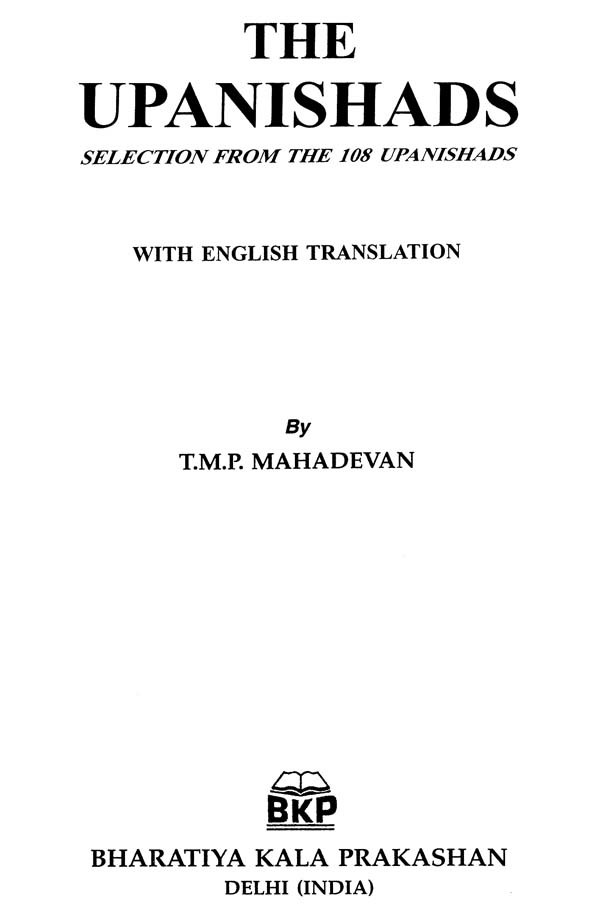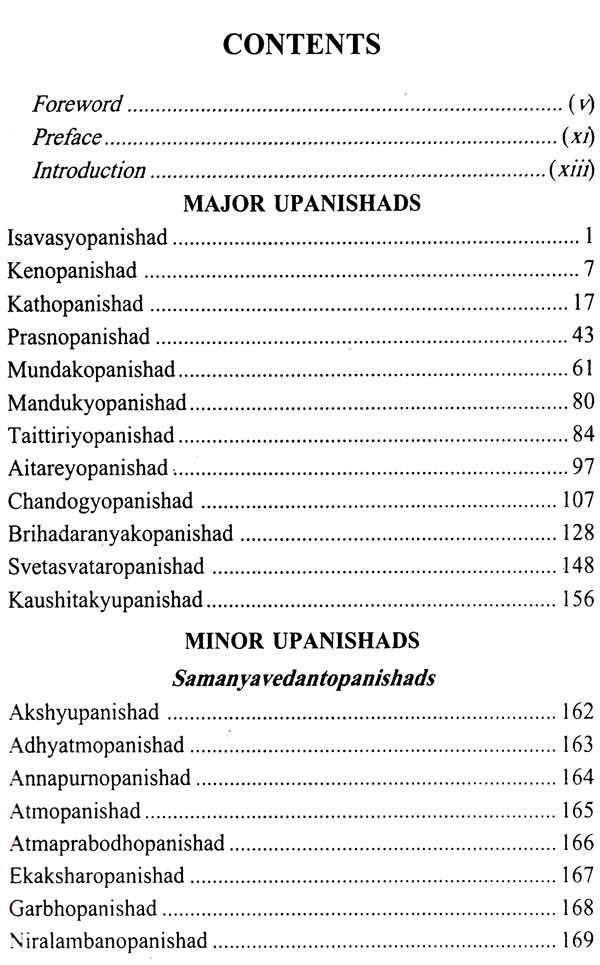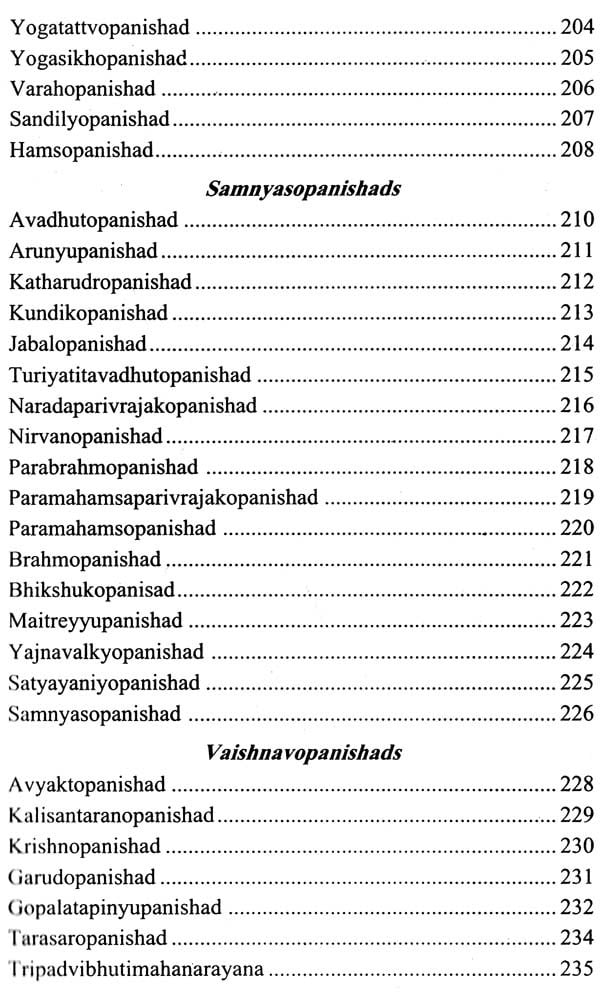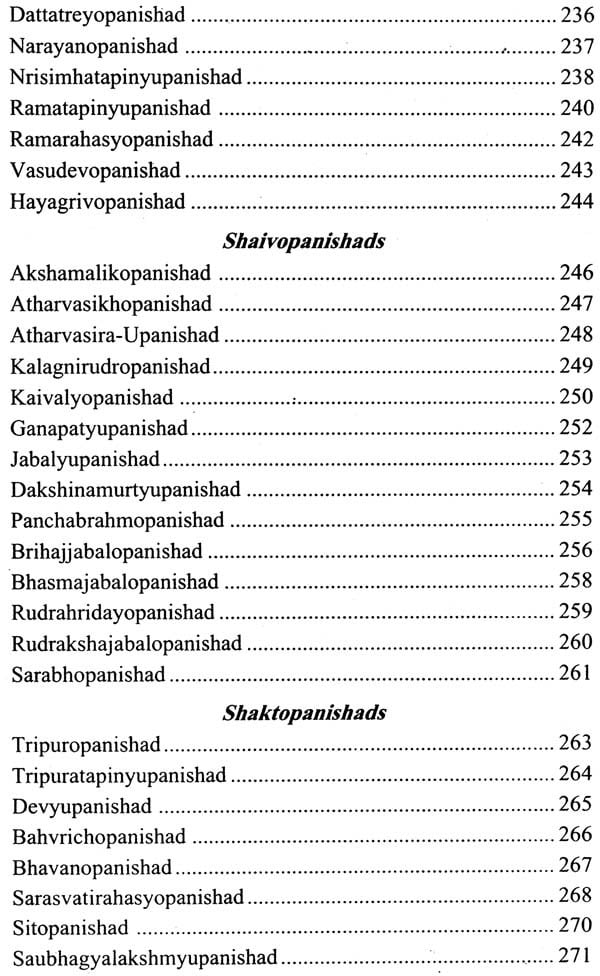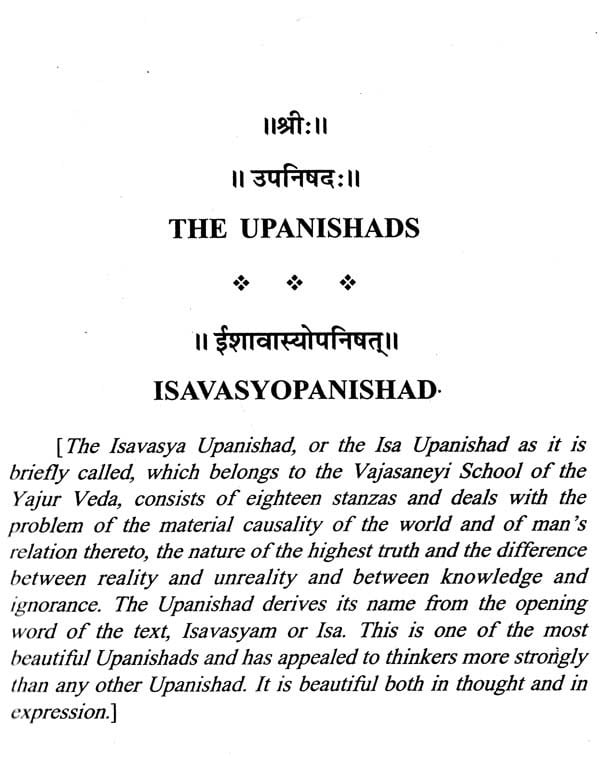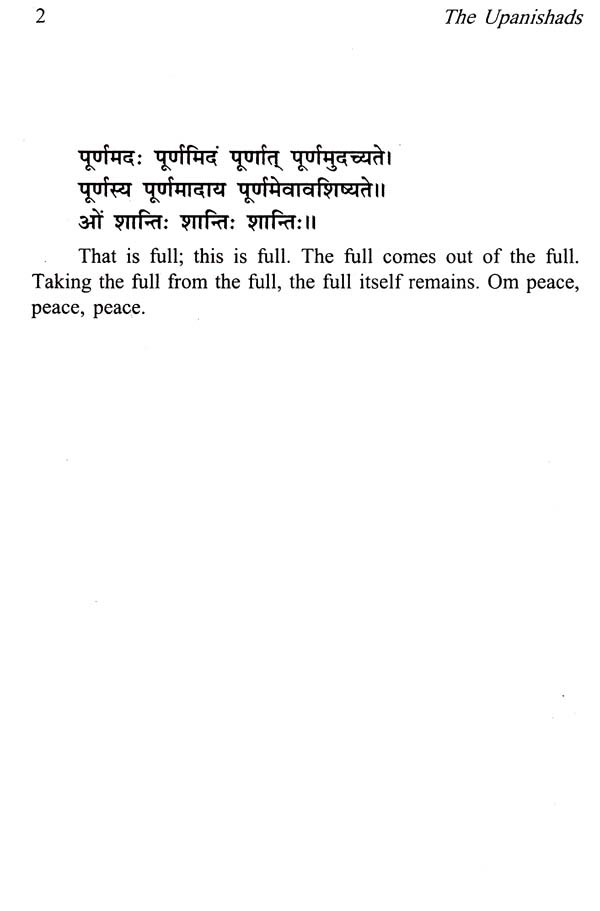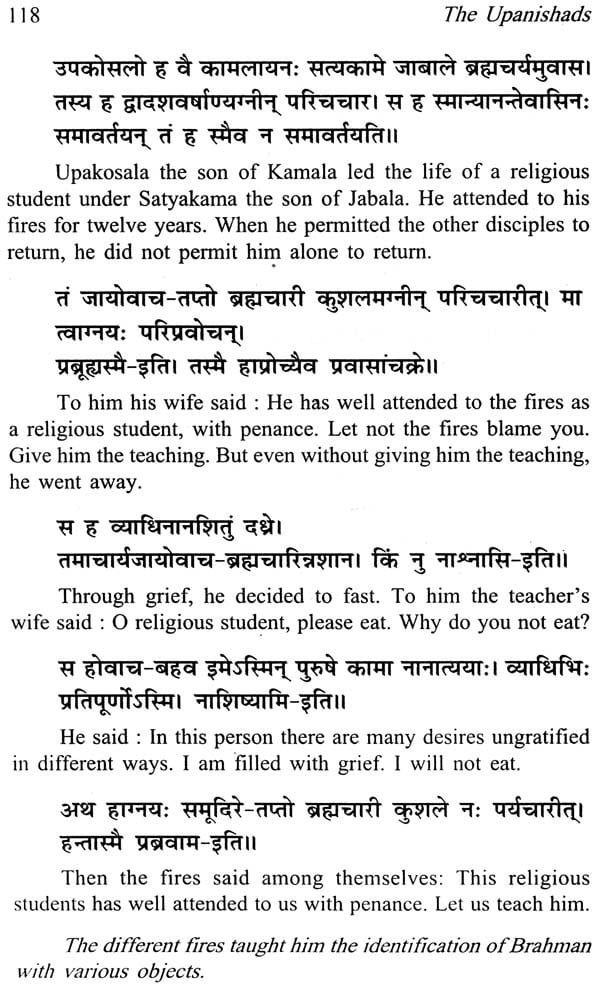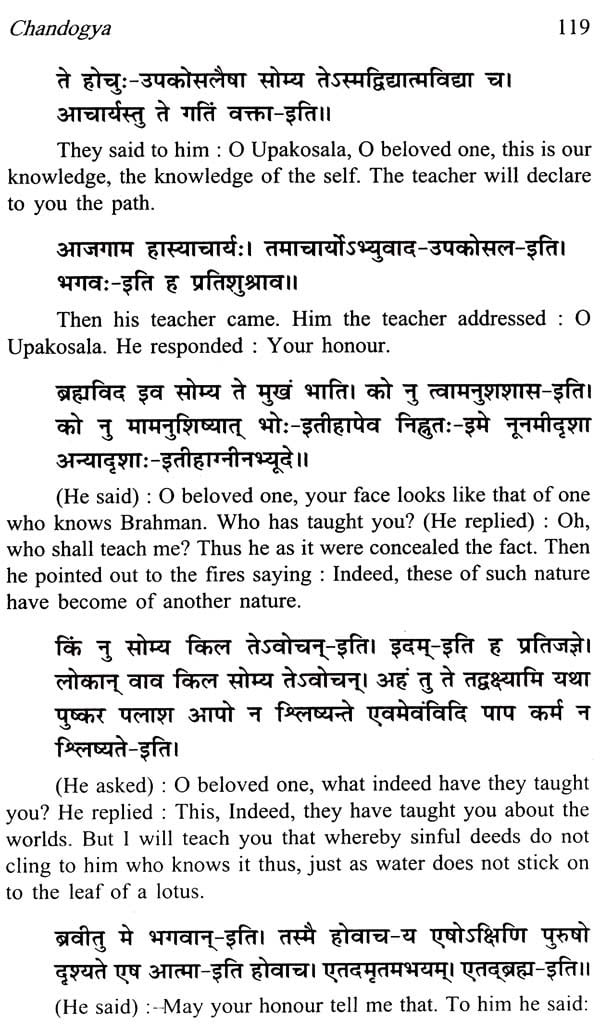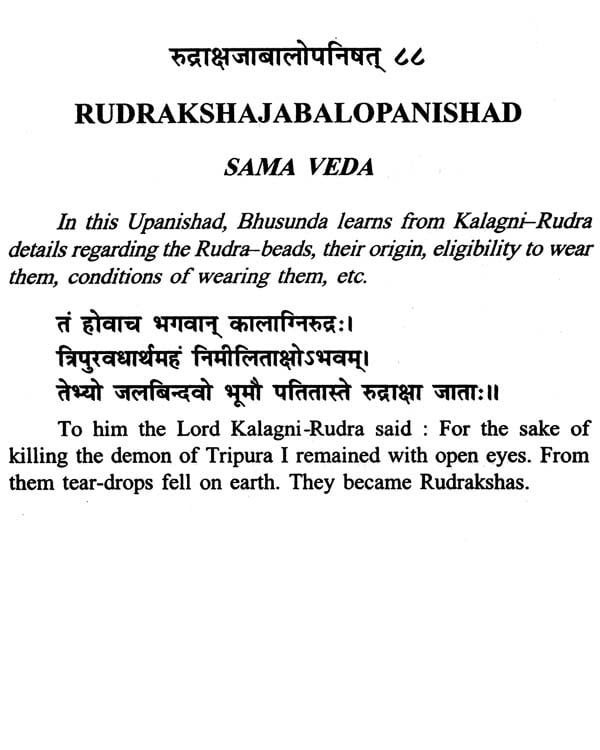About the Book "The Upanishads are the sources of the Vedanta philosophy, a system in which human speculation seems to me to have reached its very acme". "I spend my happiest hours in reading Vedantic books. They are to me like the light of the morning, like the pure air of the mountains, so simple, so true, if once understood."
"From every sentence (of the Upanisads of the Vedanta) deep, original and sublime thoughts arise, and the whole is pervaded by a high and holy and earnest Spirit. In the whole world there is no study so beneficial and as elevating as that of the Upanishads (the Vedanta). (They) are products of the highest wisdom. It is destined sooner or later to become the faith of the people."
Foreword During the past few years, G.A. Natesan brought abridged editions of two great epics, the Ramayana the Mahabharata, and the most popular the Puranas, Bhagavata. With laudable enterprise, now following them with a companion volume containing selections from Upanishads. need for this publication was, anything, greater because the Upanishads are the very foundation of Indian thought, and a knowledge of them is essential correct understanding the Indian view of life. the previous volumes give us an insight into ideal of practical life, present reveals us philosophic basis. the importance of Upanishads depend merely the place occupy in development Indian thought; their intrinsic value also is great without entering into details, may stated that possess excellences, both form content, which have proved fascinating even foreigners. Schopenhauer, it is said, always had version of Upanishads on table and was habit, before going bed, performing his devotions from its pages'. collection compiled from such source, this widely read.
The number of the Upanishads, as commonly reckoned, very large; but only about dozen of them are genuine portions of Veda. The rest are all later and are inferior value, though even they are not without their distinctive appeal. Selections from both the groups are included here, the being classed as 'major' and the latter as 'minor' Upanishads Two or three short Upanishads, belonging to the first group appear in full, while the others are represented by passages which have been selected with a good deal of care.
Preface The present volume is the fifth in the series of condensed versions of Sanskrit texts and collections of scriptural verses which Mr. G.A. Natesan with much forethought has undertaken to publish for the benefit of those who have the inclination but not the time to go through the mass of sacred Indian literature It presents selections from the 108 Upanishads with their translation in English. There are other works known as Upanishads. Four of them are found in the collection of Upanishads translated into Persian by Dara Shukko, the half-brother of Emperor Aurangzeb. But the selections given in these pages are from the traditional 108.
The first Part of the book contains selections from the ten Major Upanishads that head the classical list as found in the last of the Upanishads, Makita. Next follow the Svetasvatara and the Kaushitaki which, though classed under the Minor Upanishads, are very important from the point of view of the central Upanishadic teaching. The second Part consists of selections from the other Minor Upanishads whose classification into six groups according to the topic dealt with has been adopted. In the matter of selection, the guiding principle has been to give the main teaching of the Upanishadic philosophy. To secure this end, consistent with the limitations of space, repetitions have been avoided without omitting the important passages. At the commencement of the selections from each Upanishad will be found an introductory note giving details regarding the Upanishad as also its contents. To ensure continuity of thought, prefatory notes are given at the top of sections of the Upanishads, and the contents of omitted portions are also indicated.
In preparing the translation, it has been my aim to be faithful to the original without doing violence to the English language.
Introduction The Vedas are the earliest recorded religious literature of the world. The word 'Veda' from vid to know' means 'a book of wisdom. There are four Vedas-Rig. Yajur, Sama, and Atharva. Each of these consists mainly of two parts, viz., the Mantras and the Brahmanas. The Mantras are hymns in praise of one or more of the Vedic gods; and they are preserved in collections known as the Samhitas. The Brahmanas, liturgical in character, arç intended to give practical guidance in the performance of sacrificial rites. The Brahmanas include the Upanishads, which are usually their concluding parts. While the Brahmanas are discussions on rituals, the Upanishads are speculations in philosophy. The transition from the Brahmana to the Upanishad is ordinarily effected by means of an Aranyaka (literally 'forest book') which gives a philosophic interpretation of the rituals. Tradition believes that the division of the Veda into Mantra, Brahmana, Aranyaka, and Upanishad, is to suit the four stages in a man's life, viz., Brahmacharya, Garhastha, Vanaprastha, and Samnyasa. The Brahmacharin or the student learns not only the Mantras but also the other portions of the Veda, so that he may be well prepared for the conduct of his entire future life. As a householder (grihastha), he has to carry out the rituals; and these he learns from the Brahmanas. When he retires to the forest as a Vanaprastha, the Aranyaka provides him a substitute for the rituals and prepares him for receiving the philosophic wisdom of the Upanishads. As a Samnyasin, he seeks to realize Brahman which is taught in the Upanishads.
**Contents and Sample Pages**
